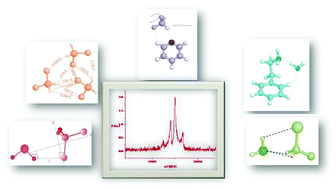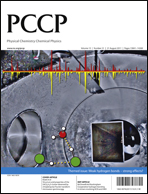“Union is strength”: how weak hydrogen bonds become stronger
Abstract
Recently reported rotational spectroscopic studies on small dimers and oligomers bound by weak hydrogen bonds show that the driving forces, the spatial arrangement and the dynamical features displayed are very different from those involved in stronger and conventional hydrogen bonds. The very small binding energies (similar to those of van der Waals interactions) imply that the stabilization of the dimer is often obtained by networks of weak hydrogen bonds. Even in the presence of multiple bonds the partner molecules show a high degree of internal freedom within the complex. This paper analyses several examples of molecular adducts bound by weak hydrogen bonds formed in free jet expansions and recently characterized by

- This article is part of the themed collection: Weak hydrogen bonds – strong effects?

 Please wait while we load your content...
Please wait while we load your content...